Jędrzejów 2024-09-18
Jędrzejów Railway Station.
Geographic coordinates: 50.644N 20.276E. Elevation 256 m.
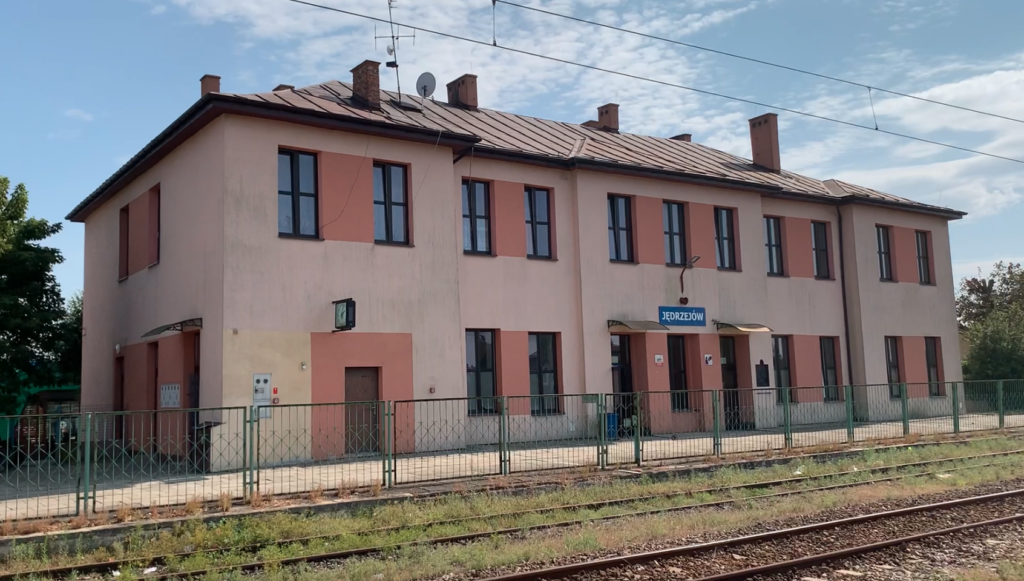
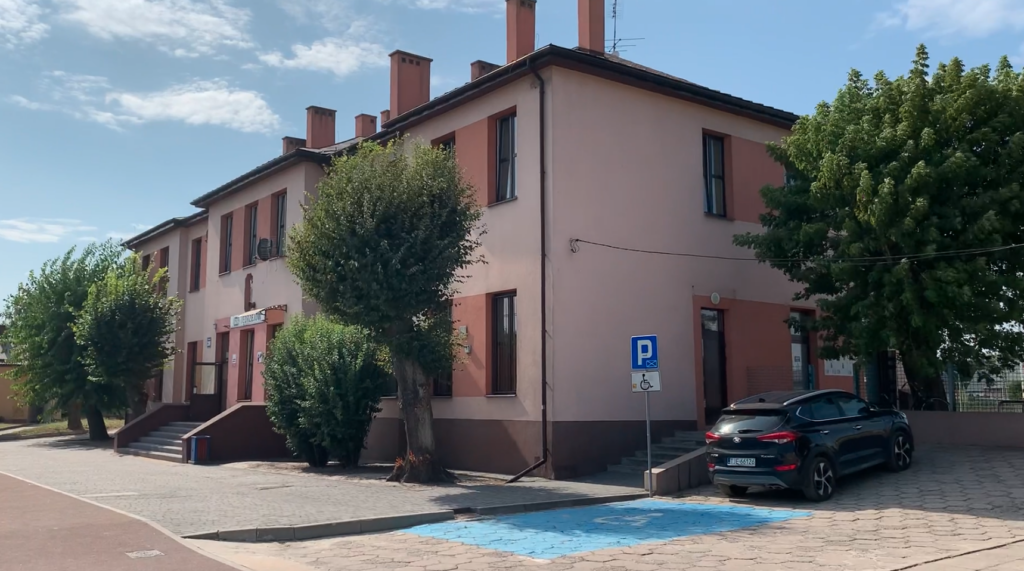
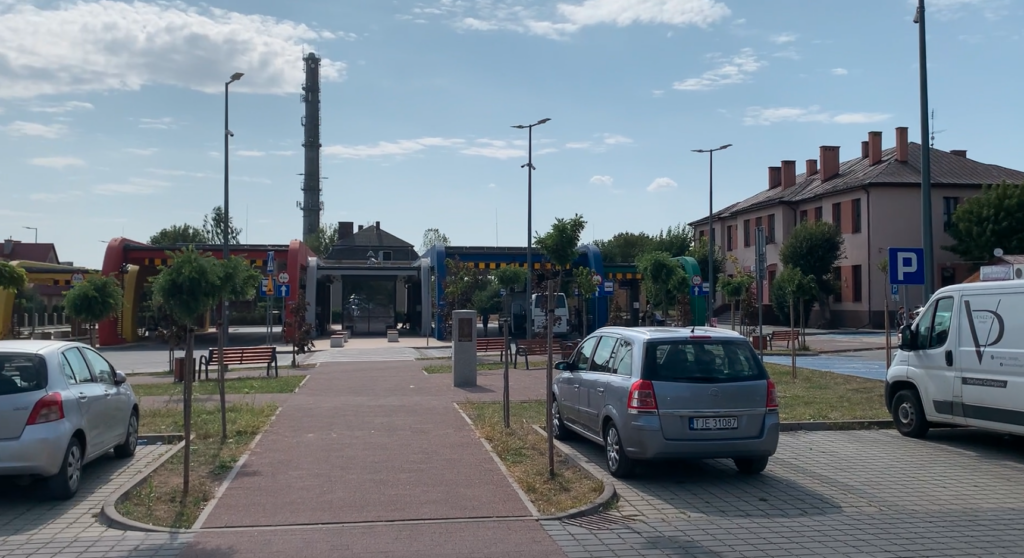
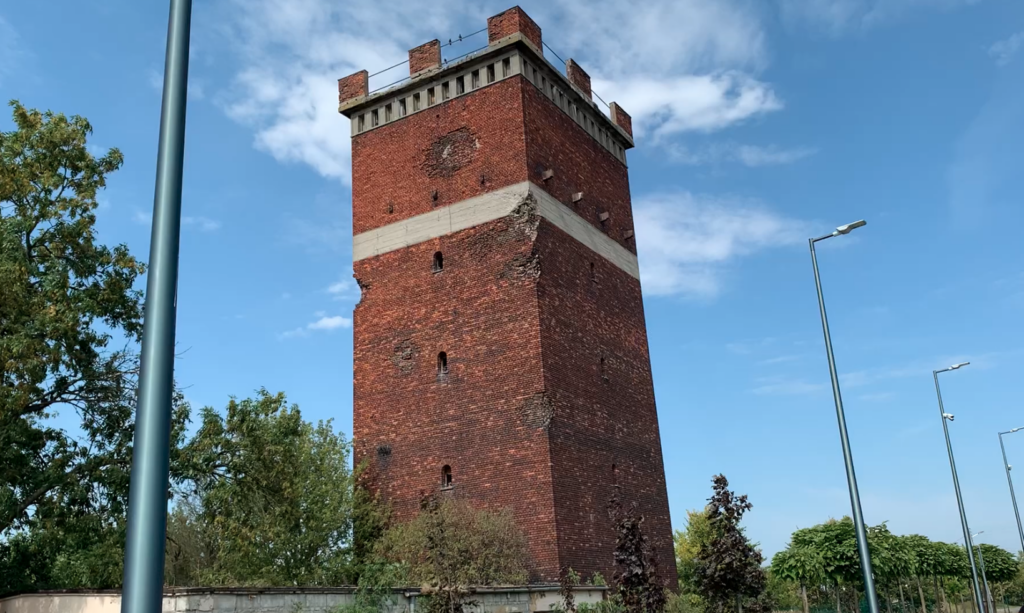
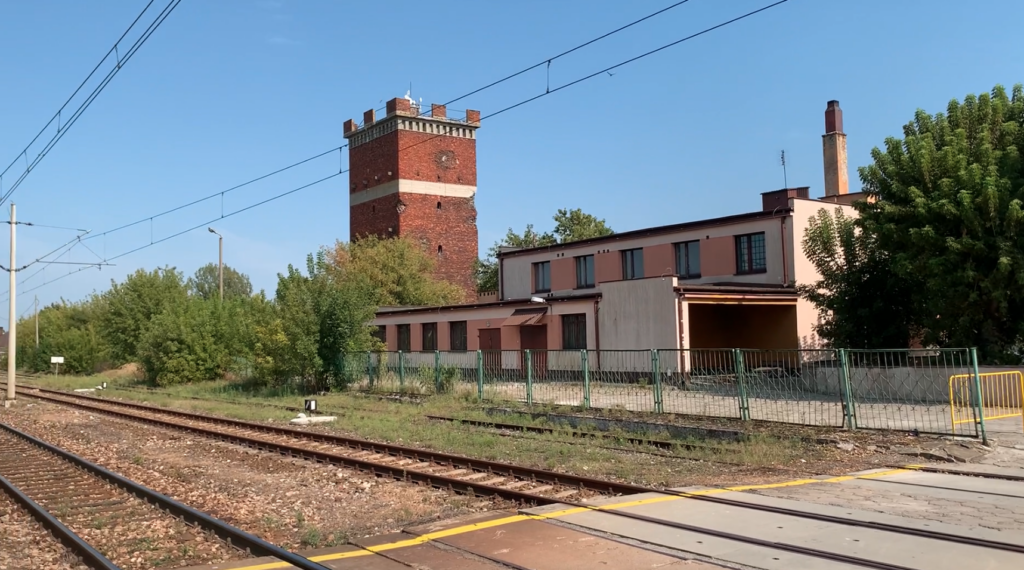
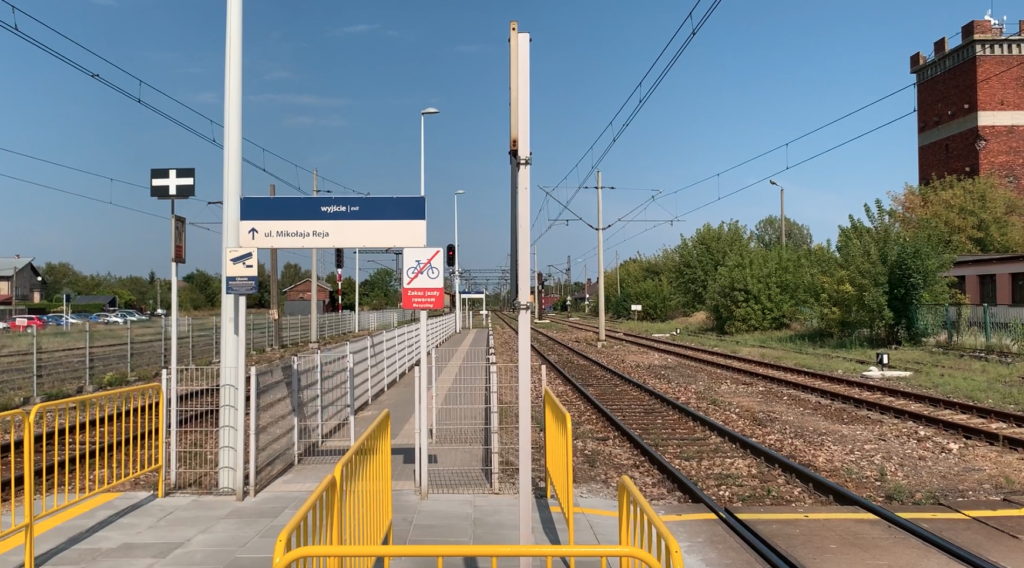
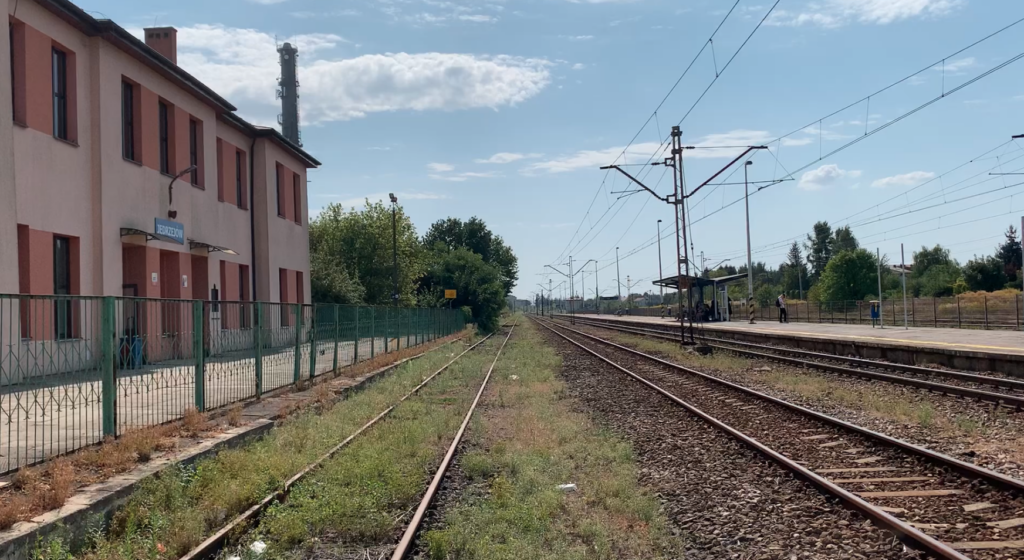
The city of Jędrzejów.
The town of Jędrzejów is a city in southern Poland, in the Świętokrzyskie Voivodeship, in the Jędrzejów County, in the Jędrzejów commune. In the period 1975–1998, the city administratively belonged to the Kielce Voivodeship. The city is called the City of Sundials. The area of the city is 11.37 km2. The elevation is 201–301 m. The population of the city is 14,706 people (2021).
Geographically, it is the Jędrzejów Plateau, which is part of the Lesser Poland Upland. Two small rivers flow through Jędrzejów: the Jasionka and the Brzeźnica. From Jędrzejów distance to: Kielce 40 km, Miechów 43 km, Kraków 75 km, Częstochowa 100 km, Tarnów 100 km, Warsaw 215 km.
Jędrzejów belongs to the historical Kraków Land and is part of Małopolska. The first settlement of Brzeźnica in this place was founded in the 7th century. One of the proofs are coins found in the nearby village of Skroniów with the image of Emperor Diocletian. After this discovery, archaeologists found that this settlement had lively trade relations with the Roman Empire. The amber route ran through here. People traded in leather, cloth, jewelry, and copper products. Excavations confirm that the stronghold existed here as early as the 11th century. In 1110, the first church of St. Adalbert in Brzeźnica was consecrated. From 1140, the town belonged to the Jędrzejów Cistercian Abbey. On March 25, 1153, the name Jędrzejów was first used in a document. In 1167, the monastery was consecrated, with the participation of the rulers Mieszko the Old and Kazimierz the Just. City rights were granted on February 16, 1271, by Bolesław the Chaste. At that time, the city had 3,000 inhabitants. In 1439, a town hall, a cloth hall, a shearing mill, and a city scale were built. In 1510, the city received the privilege of weekly markets and 3 fairs a year. In 1705, the city was destroyed by fire. In the 16th century, the city belonged to the Książ County, in the Kraków Voivodeship.
In 1795, as a result of the partitions of the Republic of Poland, Jędrzejów found itself in the Austrian partition, in the so-called New Galicia. In 1819, the Cistercian monastery was dissolved, but the monks were not expelled. They could continue to farm, but their income went to the treasury of the invaders. In 1831, a military hospital; a field hospital was established in the monastery buildings. In 1870, the town was stripped of its city rights. In 1885, a railway line was built through Jędrzejów. In 1893, the monastery caught fire. In 1900, a brewery was established. City rights were again granted in 1916, during the Great World War. In 1917, the Jędrzejów-Koprzywnica narrow-gauge railway was built. The residents of Jędrzejów actively participated in the Kościuszko Uprising, the November Uprising, the January Uprising and during World War II in the fight against the occupiers.
In 1937, a district hospital was opened. On September 1, 1939, the Germans attacked Poland and occupied the town of Jędrzejów. In 1943, a successful assassination attempt was carried out on the SS bandit, German Helmut Kapp, who died the next day in the hospital. On January 14, 1945, the German occupation came to an end. Next to the monastery there is a commemorative plaque dedicated to the soldiers of the Home Army. On the station building there is a plaque commemorating the murdered railway workers. On September 23, 1945, the Cistercian Fathers returned to Jędrzejów. In 1971, the Knitting Industry Plant “Rekord” began operating in Jędrzejów. In 1998, the narrow-gauge railway was reopened. In 2005, the eastern bypass of Jędrzejów No. S7 (E77) was built. The entire road system was completed in 2020. There is an obelisk in front of the station, which commemorates important events in the history of Jędrzejów; Foundation of the Cistercian Abbey in 1140. Granting of city rights in 1271. Congress of Polish nobility in Jędrzejów in 1576. March of the 1st Cadre Company on August 9, 1914.
Rail Transport.
An important railway route runs through Jędrzejów, connecting Kraków and Katowice with Warsaw and Lublin. Although currently Jędrzejów station is not a junction station, it is an important point in rail transport. The first railway line through Jędrzejów was laid in 1885. The line bypasses the city from the western side.
In 1917, a narrow-gauge railway was built with the Jędrzejów Narrow-Gauge station. The line runs eastwards and is called the Świętokrzyska Narrow-Gauge Railway. This railway is still in operation (2024). The railway also had other names: Świętokrzyska Access Railway, Kolejka po Nidzie, Ciuchcia-Express po Nidzie. Currently, the railway has three efficient Lxd2 locomotives and a Px48 steam locomotive. In the summer, every Sunday at 10:30, the train sets off from the Jędrzejów Wąskotorowy station (about 700 m from the main PKP station) on a trip around the Nida backwaters.
In their history, both stations were connected by narrow tracks. The narrow tracks reached the Jędrzejów station to Platform 1. Already in the 1960s, they were unused and were converted to a standard track. At the same time, the connection with the Jędrzejów Wąskotorowy station was eliminated, on a section of about 600 m. The track ran along the path of Dojazd Street.
Jędrzejów Railway Station.
Street: Władysława Reymonta 28. 28-300 Jędrzejów. The station was built as part of the investment “Iwangorodzko – Dombrowskaja Żeleznaja Doroga”, i.e. the Iron Road Iwanogrodzko (Dęblin) – Dąbrowska. Jędrzejów station in the period 1885-1915, bore the name written in Cyrillic Андреевъ. The name Jędrzejów was in force in the period 1915-1939 and from 1945, to the present. During the German occupation of 1939-1945, the name was written without Polish characters; Jendrzejow.
The station served up to 900 passengers per day in 2017 and up to 1,000 passengers in 2022. In September 2024, 44 trains departed from Jędrzejów station per day. You could travel to the following stations: Kielce Główne, Kołobrzeg, Kraków Główny, Lublin Główny, Olsztyn Główny, Ostrowiec Świętokrzyski, Sędziszów, Sosnowiec Główny, Warszawa Wschodnia, Zakopane. The PolRegio ticket office operates in the station building. In December 2023, new ticket office opening hours were established; Monday – Friday from 5:50 to 12:50, Saturday, Sunday and public holidays the ticket office is closed.
Jędrzejów railway station is currently located on Railway Line No. 8 Warszawa Zachodnia – Kraków Główny, at its 231.6 kilometer. The station has one island platform and two platform edges. According to the PKP classification, the station is classified as a local station. Platform 1 is 295 m long, has a medium height, and its surface is made of concrete pavement tiles. There are painted yellow warning lines. There is one bus shelter, benches, display cases with railway information, an audio system, and waste bins on the platform. The former platform at the station building is fenced off. There is also a fence between the tracks, which is to prevent residents from taking shortcuts. There has never been a footbridge over the tracks at the station. There was also no pedestrian tunnel. In December 2019, an additional pedestrian crossing was built from the side of Mikołaja Reja Street. A parking lot for passenger cars was built on this street, which is used by PKP passengers. Thanks to this crossing, the route for pedestrians and cyclists from the western part of the city to the center of Jędrzejów has been shortened. The crossing is at the level of the tracks, but it is safe. Residents have been waiting for this crossing for a very long time.
There was a wagon scale at the station. Until 1962, for wagons weighing up to 40 tons, and in the period 1962-1988 for wagons weighing up to 80 tons. There was no locomotive shed or repair workshops at Jędrzejów station. There was a water tower. Initially, there was a wooden tower, which was destroyed during the Great World War in 1915. The tower was rebuilt. During the German occupation, in 1943, a new brick water tower was built, which is square in base and resembles a defensive tower. In fact, during the battles for Jędrzejów, in January 1945, the Germans set up an artillery position on the upper terrace. That is why the tower has visible traces of shelling. Currently, the tower serves as a mast for mobile phone antennas. Near the water tower, in the inter-track area, there is one water crane.
There is a car park at the station. Parking can only be paid for in cash at automatic pay stations. Please have the exact amount ready. The entrance to the car park is from the main entrance to the station. For passengers travelling without their own car, it is possible to get to the station using public transport.
The Jędrzejów station was electrified on 29 April 1967, as part of the electrification of the LK No. 8 Kielce – Sędziszów section.
On 27 July 2021, a new bus station was opened at the railway station. The works lasted 18 months.
Jędrzejów Station.
The first station building was built and put into use in 1885. The building was large and similar in size to the current one. As a result of the Great World War, in 1915, the station was seriously damaged. By 1917, the building was rebuilt in the same form. As a result of the Germans’ attack on Poland, in 1939, the station was destroyed by 80%. The northern wing has been partially preserved. After World War II, the station was rebuilt in the place of the old station, according to a new design.
Written by Karol Placha Hetman
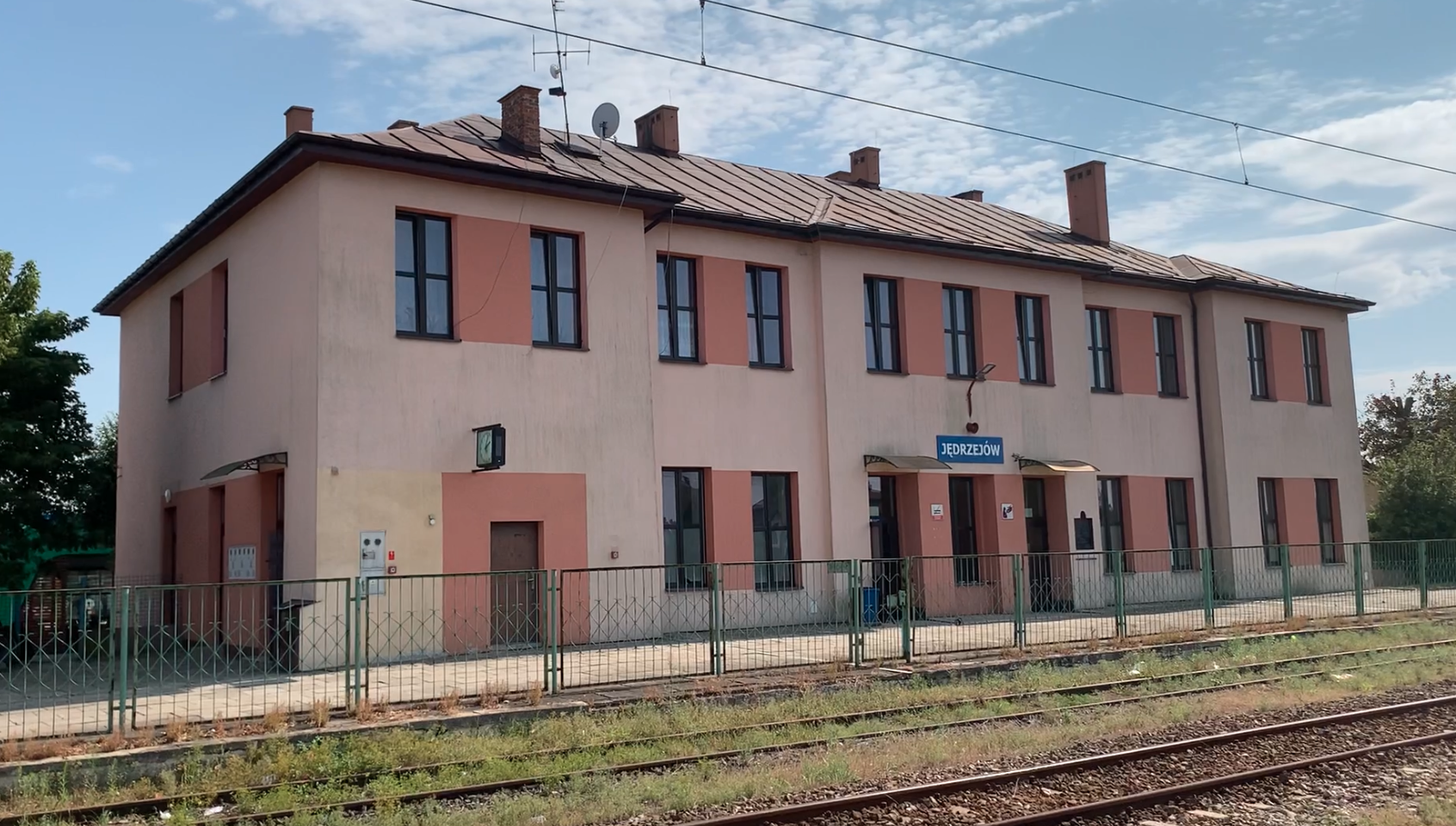
Leave a Reply
You must be logged in to post a comment.